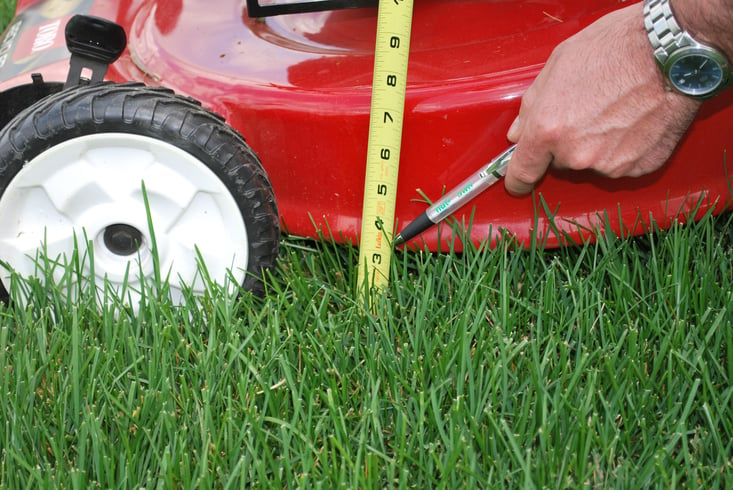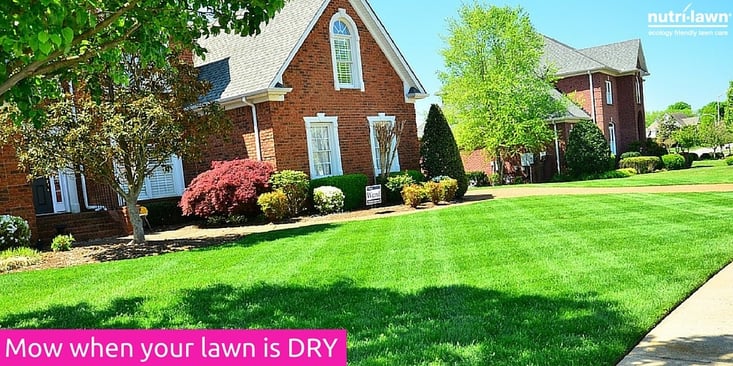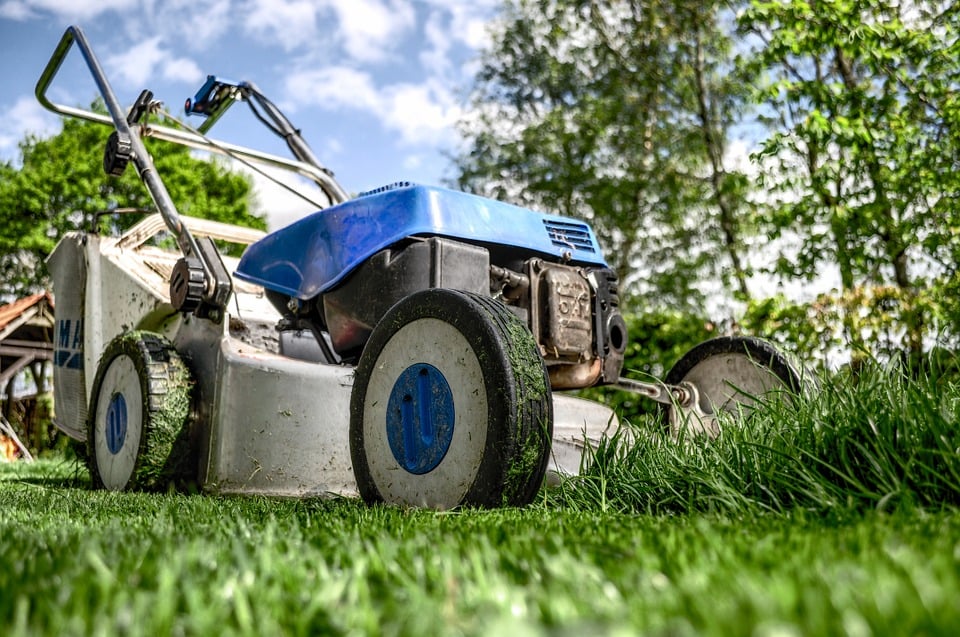
Mowing grass puts stress on your lawn. The lawn care experts at Nutri-Lawn Ottawa have created a list of tips, best practices, for mowing lawn so your grass stays thick and healthy.
Mower Blades Should Be Sharp
Ever tried to cut paper with dull scissors? The paper gets torn and ripped and creased, a far cry from the clean cut you were looking for. Your grass is no different. One of the most common spring lawn care tips you’ll read about it sharpening your mower blades. Grass recovers more quickly from a clean cut, but dull mower blades leave grass torn and ragged. If you want a clean even cut, you need the right tool for the job.
Raise Your Mower Deck
Some homeowners like to keep their grass short so they don’t have to mow it as often. The problem is that if the plant crown is damaged (most lawns have minor dips and bumps leaving bare spots) your lawn becomes vulnerable to weeds and diseases. The optimal length of the grass blades for cool season grasses (the most common in Canada) is 2.5 to 3.5 inches. Longer grass blades shade the soil and cooler soil retains moisture better, resists weeds and disease, and helps the plants better resist mid-summer heat and drought.
Clippings Are Organic Fertilizer
Grass clippings are tricky for those trying to reduce their waste because they’re tricky to compost so they end up in bags at the curb for yard waste pick up. Why not just leave them on the lawn? Grass clippings provide a quick source of nitrogen, potassium, and phosphorus for your lawn. Mow grass so the clippings are passed over a few times to further break them down. This is best done on a dry lawn as wet clippings clump and kill the grass underneath. Grass clippings also act as a mulch helping soil retain moisture and can also discourage weed growth.
Change Patterns
Just like an indoor plant will grow toward the sun, grass grows in the direction that you cut. Over time, if a lawn is mowed in the same pattern every week, the grass takes on a noticeable lean. For best results, be sure to change up the cutting direction/pattern every week or two so grass grows straight and tall.
Stay In The Shade
It’s more work to mow grass at the hottest part of the day, and it takes a bigger toll on your lawn. Wait until the cooler hours to mow grass to reduce the stress on the plant, or mow grass when it’s in the shade. The grass will recover quicker.
Mow When Lawn Is Dry
Sometimes mowing wet grass is unavoidable. All things being equal, mow when the grass is dry. The clippings are recycled easier, and there’s less chance of damaging your lawn because mowers in soggy ground can damage or kill plants and leave ruts in the soil.
Sometimes the grass gets a little long and it stays wet near the ground no matter how hot the weather. Make sure to pick up any grass clipping clumps that are left behind and slow down. If you force the mower to move quickly through wet grass, you’ll be left with an uneven and ragged cut.
Good mowing practices will help make your lawn robust and healthy. The lawn care experts at Nutri-Lawn Ottawa will help identify what your lawn requires to excel this season. Contact Nutri-Lawn Ottawa for a complimentary quote today. You’ll be glad you did!







